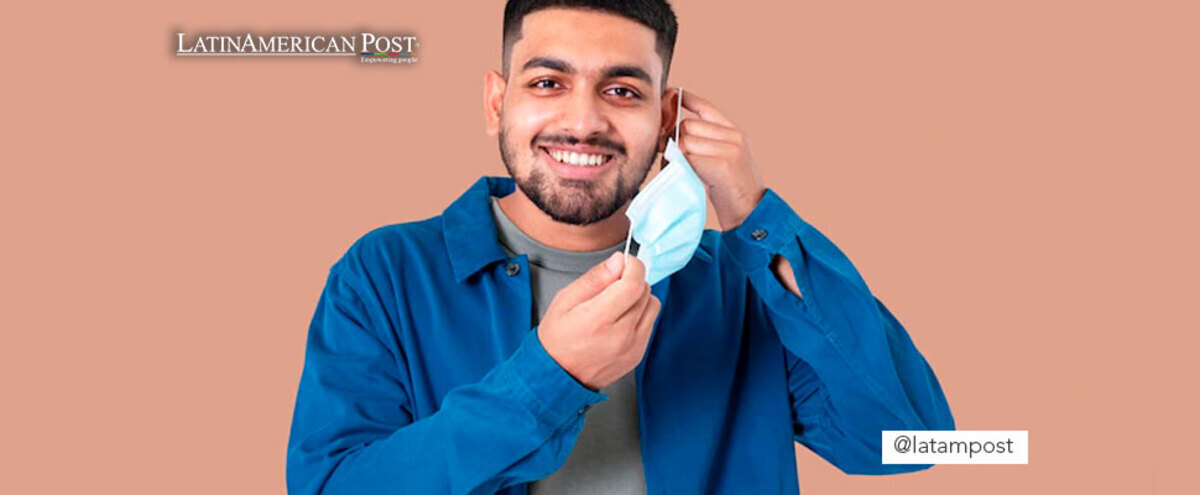Back To Life Without Masks: What Awaits Us?
More and more countries are eliminating the mandatory use of masks in closed spaces. However, this poses various challenges for societies.

Photo: Freepik
LatinAmerican Post | María Fernanda Ramírez Ramos
Listen to this article
Leer en español: De vuelta a la vida sin mascarillas ¿Qué nos espera?
Colombia announced that as of May 1, the mandatory use of masks in closed spaces will be eliminated. This was explained by President Iván Duque at a press conference. This measure will be applied in the municipalities that have at least 70% vaccination of second doses and 40% in booster doses . However, it is not the first country on the continent to eliminate the mandatory use of masks. Uruguay, Brazil, Chile and Paraguay have also announced the end of this health measure for the majority of the population. In fact, this model has also been adopted in European countries such as Spain or England, and in the United States, among others. What will it be like to return to a life without masks?
A partir del 1 de mayo se retira el uso de tapabocas en lugares cerrados, con excepción de: servicios de salud, hogares geriátricos, transporte y espacios cerrados de instituciones educativas. La medida aplicará en municipios con 70 % de segundas dosis y el 40 % de refuerzo. pic.twitter.com/PPxhvqwK0W
— Iván Duque ???????? (@IvanDuque) April 25, 2022
After two years of continuous use of the mask, this measure generates discomfort in a large part of the population, while for others it is a sign of liberation and a return to pre-pandemic normality. Although it is known that the mask is the most effective way to prevent the spread of SARS-CoV-2, accompanied by other sanitary measures such as hand washing, the decision not to require its use is due to the success in the campaigns of vaccination and the decrease in severe cases. This shows that the approach with which this disease will be tackled has changed.
It is a virus that we will have to learn to live with, as was done with so many others. What consequences can these measures bring? In several Asian countries, even before the pandemic, the mask was already widely used. However, in Western countries, this was not a habit. One of the lessons of the pandemic is that biosecurity measures are effective in preventing the spread of viruses. In this sense, it is important to wear the mask when you have symptoms, even if it is a cold. In this way, you protect people and yourself. So it is not sensible to think about abandoning biosecurity protocols altogether.
Also read: Gallery: Back to the Office Anxiety ,How to Overcome it?
It is pertinent to remember that the coronavirus has not gone away and that, despite being vaccinated, it is possible to become infected with the virus. For this reason, there are those who have decided to continue wearing the mask indoors, where they feel more exposed. In fact, it is a transition that can generate anxiety, because the fear of contagion is still present for many. It is important to make the decision to remove the mask calmly and when each person feels ready. Do not forget that if you have contact with vulnerable people, it is best to continue taking precautions.
A new @CDCMMWR study shows that people who reported always wearing masks or respirators in indoor public settings in California were less likely to test positive for #COVID19 compared with those who reported not wearing a face covering. Learn more. https://t.co/T8gaqiPHyI pic.twitter.com/6UJ9cs60NK
— CDC (@CDCgov) February 4, 2022
On the other hand, an investigation carried out in France determined that due to strict biosafety protocols for a long time, such as the use of masks, negative consequences could occur on the immune system, for example in children. “The lack of immune stimulation due to the reduced circulation of microbial agents and the consequent reduction in vaccine uptake induced an “immune debt” that could have negative consequences when the pandemic is under control and non-pharmaceutical interventions are eliminated. The longer these periods of "low viral or bacterial exposure" are, the greater the likelihood of future epidemics."





